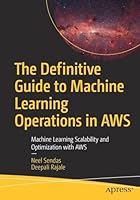
Deep Learning in Python
- Length: 38 pages
- Edition: 1
- Language: English
- Publication Date: 2016-03-11
- ISBN-10: B01CVJ19E8
- Sales Rank: #388727 (See Top 100 Books)
Deep Learning
Deep learning is making waves. At the time of this writing (March 2016), Google’s AlghaGo program just beat 9-dan professional Go player Lee Sedol at the game of Go, a Chinese board game.
Experts in the field of Artificial Intelligence thought we were 10 years away from achieving a victory against a top professional Go player, but progress seems to have accelerated!
While deep learning is a complex subject, it is not any more difficult to learn than any other machine learning algorithm. I wrote this book to introduce you to the basics of neural networks. You will get along fine with undergraduate-level math and programming skill.
All the materials in this book can be downloaded and installed for free. We will use the Python programming language, along with the numerical computing library Numpy. I will also show you in the later chapters how to build a deep network using Theano and TensorFlow, which are libraries built specifically for deep learning and can accelerate computation by taking advantage of the GPU.
Unlike other machine learning algorithms, deep learning is particularly powerful because it automatically learns features. That means you don’t need to spend your time trying to come up with and test “kernels” or “interaction effects” – something only statisticians love to do. Instead, we will let the neural network learn these things for us. Each layer of the neural network learns a different abstraction than the previous layers. For example, in image classification, the first layer might learn different strokes, and in the next layer put the strokes together to learn shapes, and in the next layer put the shapes together to form facial features, and in the next layer have a high level representation of faces.
On top of all this, deep learning is known for winning its fair share Kaggle contests. These are machine learning contests that are open to anyone in the world who are allowed to use any machine learning technique they want. Deep learning is that powerful.
Data Science and Machine Learning
Data science is a trending field in tech and a big part of it is “machine learning”. These are programs that can learn automatically learn what their output should be, instead of trying to manually program it yourself.
Many startups who are starting to see growth now want to quantify their data and perform analyses that optimize sales, customers, and profit.
In recent news, Google’s deep learning machine has produced “dream images”. Their machines are so much like the brain, they can produce dreams! In this course, we’re going to cover a technology made by Google just for deep learning, called TensorFlow. We are also going to look at a library that has been around for much longer called Theano. I am going to show you how to build neural networks from scratch using both of these very awesome tools.
By the end of this course, you’ll be able to take the things you’ve learned, and create very powerful machine learning models to do things like sports betting, stock market prediction, and revenue optimization at your company.
Do you want a gentle introduction to this “dark art”, with practical code examples that you can try right away and apply to your own data? Then this book is for you.
Table of Contents
Chapter 1: What is a neural network?
Chapter 2: Biological analogies
Chapter 3: Getting output from a neural network
Chapter 4: Training a neural network with backpropagation
Chapter 5: Theano
Chapter 6: TensorFlow
Chapter 7: Unsupervised learning, autoencoders, restricted Boltzmann machines, convolutional neural networks, and LSTMs







